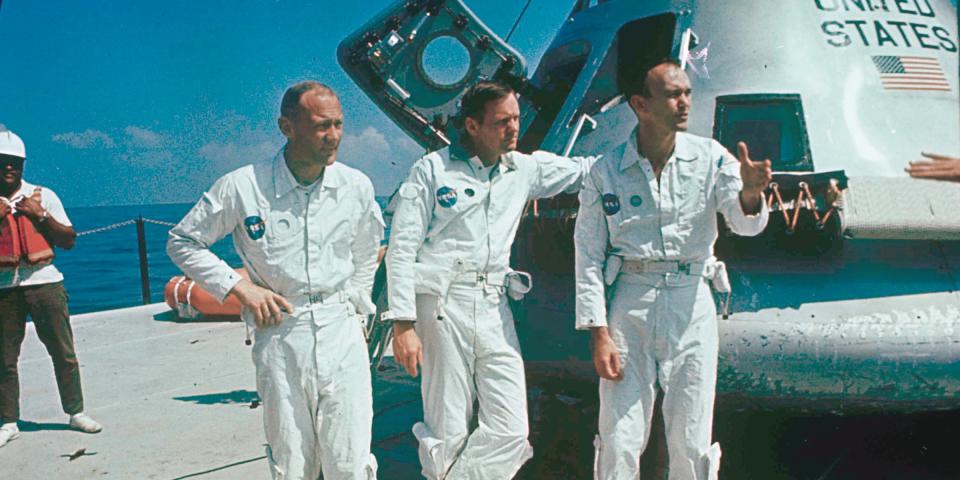Buzz Aldrin explains why Neil Armstrong was the first person on the moon
NASA via Getty Images
July 20, 2019, is the 50th anniversary of the Apollo 11 moon landing when American astronaut Neil Armstrong became the first person ever to walk on the moon.
Most people assume mission Commander Neil Armstrong was always NASA's first choice to walk on the moon because of his seniority.
Apollo 11 Lunar Module Pilot Buzz Aldrin revealed in a Reddit AMA that in previous moonwalks, it was typical for the junior crewmember to leave the space capsule while the commander remained inside.
According to Aldrin, NASA decided Armstrong should walk on the moon first because it was "symbolic."
July 20, 2019, is the 50th anniversary of the Apollo 11 moon landing when American astronaut Neil Armstrong became the first person ever to plant boots on the dusty lunar surface. Buzz Aldrin followed about 20 minutes later.
Most people assume that NASA always planned for Armstrong to be the first person to step out onto the moon because of his rank. Armstrong was commander of Apollo 11 and Aldrin was the lunar module pilot. Michael Collins stayed behind in lunar orbit as command module pilot.
In a Reddit AMA to mark the 45th anniversary of the historic mission, Aldrin described the uniqueness of NASA's decision to have Armstrong walk on the moon first. Typically the junior person — Aldrin in this case — would step outside so that the more senior person — Armstrong — would be left safely behind the controls and in a better position to take action in an emergency.
"In all previous missions, if someone, a crew member, was to spacewalk, it was always the junior person, not the space commander who would stay inside," Aldrin wrote.
At least one team at NASA though the junior person should go out first, Aldrin wrote, "but many people felt the great symbology of the commander [taking that responsibility]."
So Armstrong climbed down the ladder, followed by his famous "one small step" line.
"The decision that was made was absolutely correct as far as who went out first, symbolically," Aldrin wrote in his 2014 AMA.

NASA
NASA's history website, "Apollo Expeditions to the Moon," tells a slightly different version of the story. The agency originally planned for Aldrin to be the first man to step on the moon. But the lunar module posed design challenges that made this order difficult. The hatch opened on the opposite side where Aldrin was seated.
"For Aldrin to get out first it would have been necessary for one bulky-suited, back-packed astronaut to climb over another," NASA writes. "When that movement was tried, it damaged the LM mockup."

NASA/AP
Donald "Deke" Slayton, one of the original Mercury 7 astronauts and NASA's director of flight crew operations, said allowing Armstrong to walk first was a basic protocol change. "I figured the commander ought to be the first guy out," Slayton is quoted as saying.
According to the historical account, Armstrong said he was never "never asked [his] opinion" if he wanted to be the first man out and the decision was not based on rank.
A version of this article was originally published on July 20, 2014.

